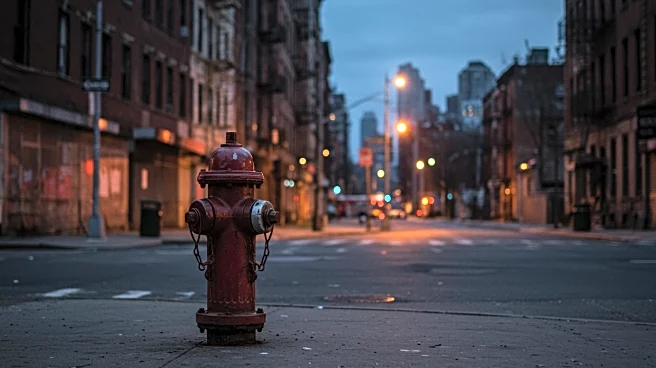What is the story about?
What's Happening?
A new book titled 'Born in Flames: The Business of Arson and the Remaking of the American City' by historian Bench Ansfield challenges the long-held belief that tenants were responsible for the fires that ravaged New York City, particularly in the Bronx, during the 1970s and 1980s. The book argues that greedy landlords, driven by flawed legislation and insurance policies, were the primary culprits. The Fair Access to Insurance Requirements (FAIR) initiative, intended to provide insurance to property owners, inadvertently incentivized arson by overvaluing properties, leading landlords to exploit the system for financial gain. The book details cases where landlords hired individuals to set fires, resulting in widespread destruction and displacement.
Why It's Important?
The revelations in Ansfield's book highlight systemic issues in urban policy and housing that have long-term implications for city planning and social justice. By exposing the role of landlords in the fires, the book shifts the narrative from blaming marginalized communities to scrutinizing the policies that enabled such exploitation. This understanding is crucial for addressing ongoing housing insecurity and inequality in urban areas. The book's findings could influence future policy decisions, encouraging more equitable and transparent insurance and housing regulations to prevent similar abuses.
What's Next?
The book's publication may prompt renewed discussions among policymakers, urban planners, and community leaders about the legacy of past housing policies and their impact on current urban development. There could be calls for revisiting and revising insurance and housing policies to prevent exploitation and ensure fair treatment of tenants. Additionally, the book may inspire further research into the historical and ongoing challenges faced by urban communities, potentially leading to advocacy for more comprehensive reforms.
Beyond the Headlines
The book also touches on broader themes of race and capitalism, suggesting that the economic and racial inequalities that fueled the fires in the 1970s persist today. This perspective invites a deeper examination of how systemic racism and economic disparities continue to shape urban landscapes and affect marginalized communities. The historical context provided by Ansfield's research could serve as a catalyst for broader societal reflection and action towards achieving racial and economic justice.
AI Generated Content
Do you find this article useful?











